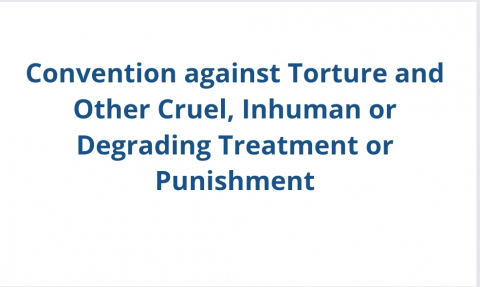Freedom from Torture
Civil Society Coalition against Torture and impunity in Tajikistan

The Convention against Torture and Other Cruel, Inhuman or Degrading Treatment or Punishment was adopted by the General Assembly on 10 December 1984. It completed the codification process to combat the practice of torture.
As part of this instrument, a monitoring body, the Committee against Torture, was set up. Its main function is to ensure that the Convention is observed and implemented by all States parties. After being ratified by the 20th State party, it came into force on 26 June 1987. The Committee met for the first time in April 1988 in Geneva.
The Convention absolutely prohibits torture and other acts of cruel, inhuman, or degrading treatment or punishment. States parties agree to prevent acts of torture in connection with activities that include:
Full text of the Convention here: